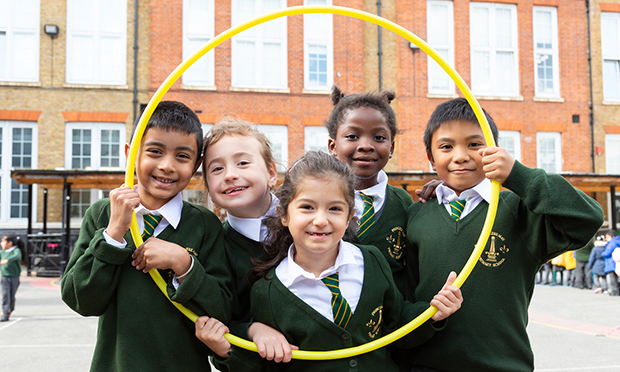Gap between disadvantaged pupils and their peers narrows after above-average year for Hackney’s schools

Pupils at William Patten Primary, pictured in 2019. Photograph: ruth@peekaboophotos.co.uk
The attainment gap between disadvantaged pupils and their peers in Hackney has lessened after the borough’s schools performed better than the national average.
An annual review of pupils’ performances in early years, Key Stage 2 (KS2) and Key Stage 4 reported that the percentage achieving “a good level of development” in 2023 was 70 percent. This is above both the London and national average.
“In some areas, children in Hackney perform the best in class nationally,” said Paul Senior, interim director of education and inclusion.
His colleague Anton Francic, principal secondary adviser, attributed the success to “what happens in the classroom and the curriculums taught in them”, as well as collaboration with teacher recruitment and specialised teacher training.
There are over 300 local authorities in England, and since 2018, the borough of Hackney has climbed the ranks from 101st to 35th, becoming one of the highest performing local authorities in the country. However, this is down from 2022, when Hackney ranked 28th.
In 2023, the attainment gap between girls and boys was cut in half, falling from 15 to seven per cent. This is below the national gap of 13 percentage points.
However, the attainment level between state-funded schools and private, voluntary, and independent school increased, with a third of pupils performing better in the latter schools.
The report also highlighted that attainment gaps persist amongst some ethic groups which have been historically lower performing. In 2023, Bangladeshi and African boys performed 22 and 21 percent below the overall Hackney level, respectively.
“We know that certain groups do better than others, and we have to give those groups targeted approaches,” said Jason Marantz, interim assistant director and head of school performance and improvement for KS2.
To further close the attainment gap in Hackney, Marantz said they will be providing extra support to pupils with English as an additional language.
He concluded: “The aim is to get every child from a heritage group as strong as the best in that school.”
